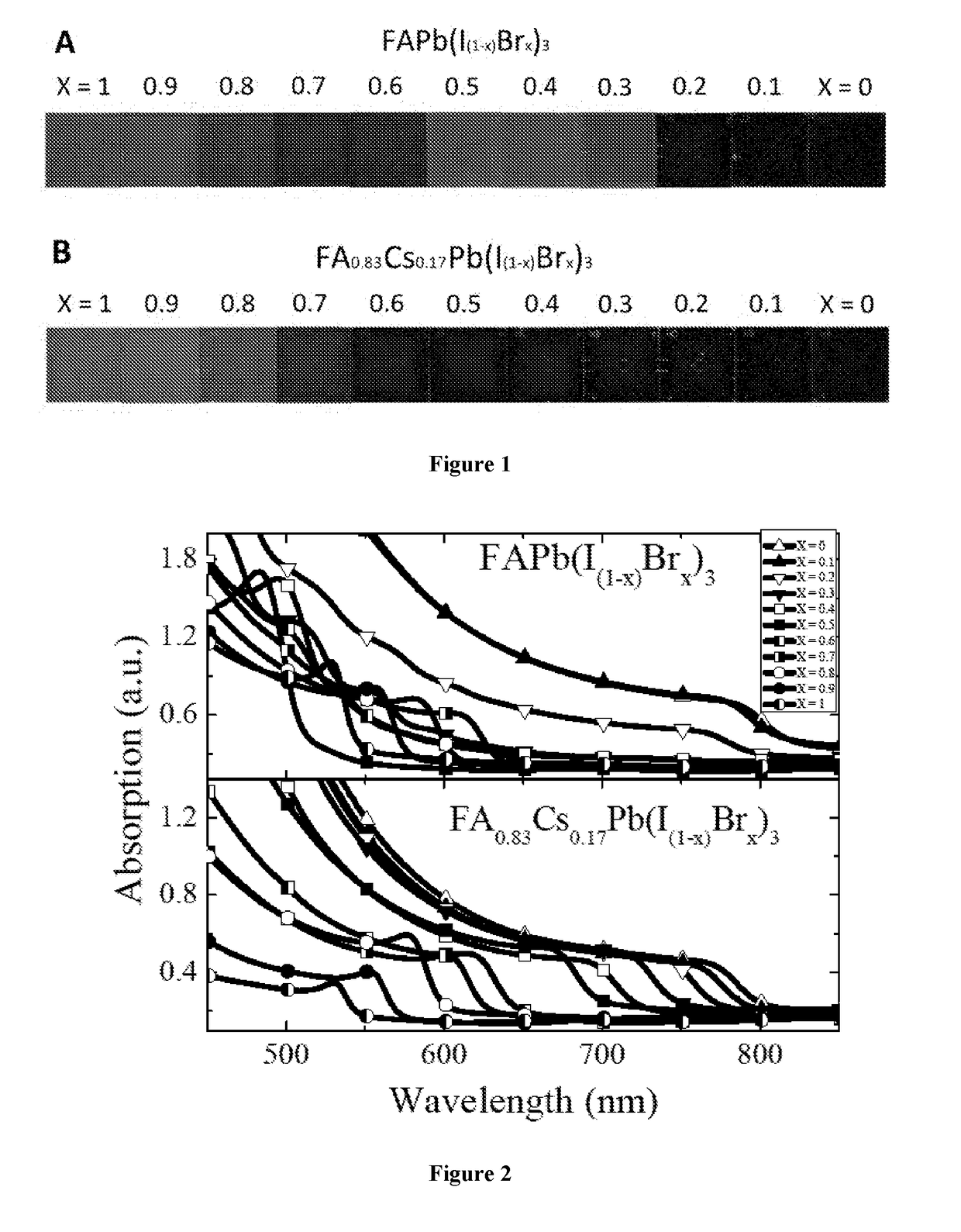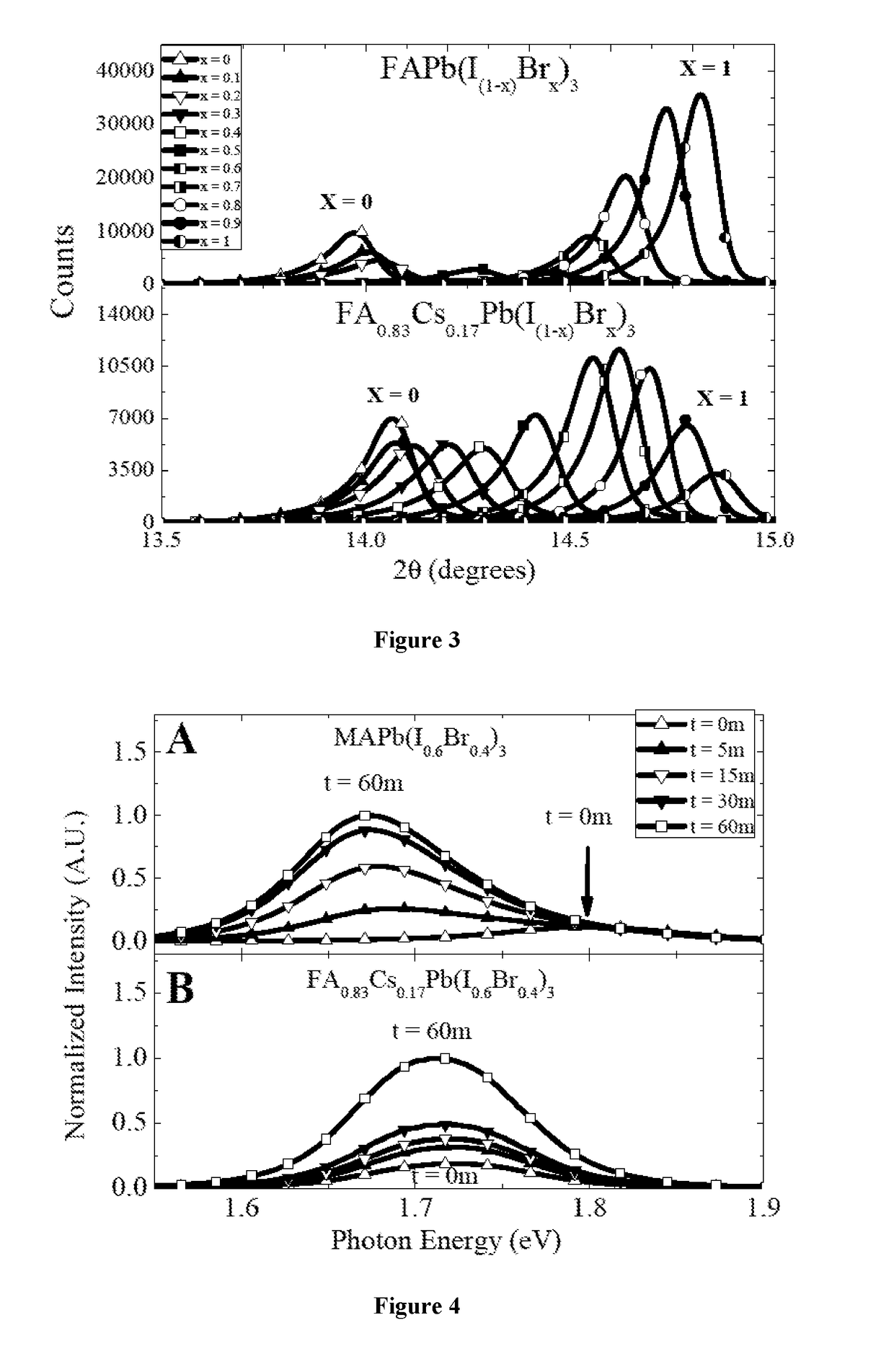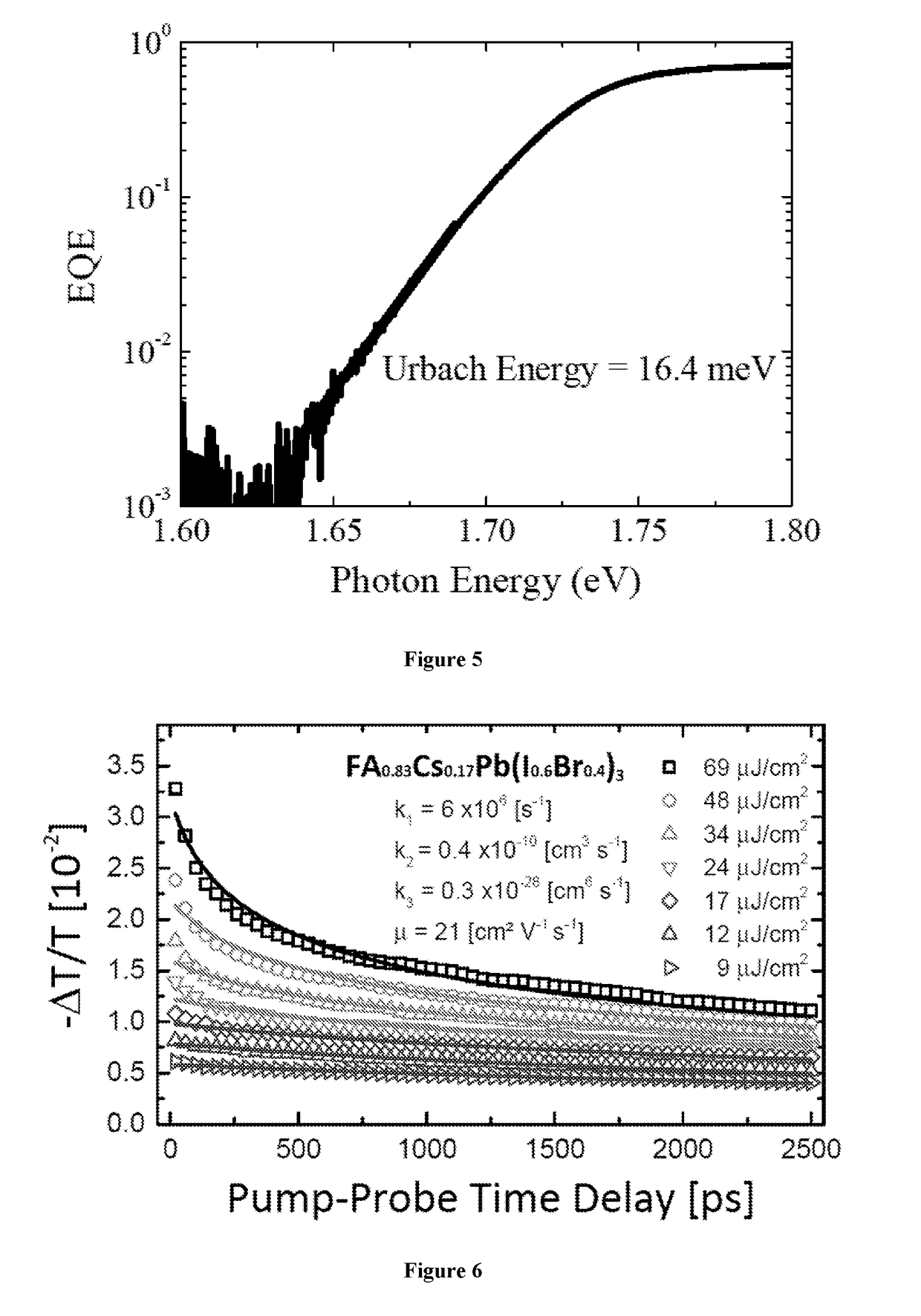Mixed cation perovskite
a technology of mixed cation perovskite and perovskite, which is applied in the field of crystalline compounds, can solve the problems of limited use, high energy disorder of mapbi/sub>3/sub>, and unexpectedly low absorption
- Summary
- Abstract
- Description
- Claims
- Application Information
AI Technical Summary
Benefits of technology
Problems solved by technology
Method used
Image
Examples
example 2
of Br Content
[0238]Devices containing various perovskites of the formula FA0.83Cs0.17Pb(I(1-x)Brx)3 were synthesis by a method equivalent to that described in Example 1. The PCE of each device was evaluated as for Example 1 and the results are shown in FIG. 33. The devices generally perform well with different bromine contents, and an improvement is observed for contents of over 10%.
example 3
minescence Studies
[0239]Examples 1 and 2 concern the photoabsorbent properties of the mixed cation / mixed halide perovskites of the invention. The crystalline compounds of the invention have also been found to be effective photoemissive compounds. As such, light emitting devices could be constructed containing the crystalline compounds of the invention.
[0240]In particular, a series of FA0.825Cs0.175Pb(I(1-x)Brx)3 with x=[0, 0.05, 0.1, 0.2, 0.3, 0.4] devices was prepared following the same fabrication method described for photovoltaic devices. To measure the electroluminescence intensity, the devices were kept in a chamber filled with Nitrogen and placed inside an integrating sphere. The emitted light is collected with a fiber and analysed with a fixed grating CCD spectrometer (Maya Pro, Ocean Optics). The intensity of the luminescence is estimated from the area of the luminescence peak. The current-voltage (IV) properties are measured simultaneously with a Keithley sourcemeter (Model...
example 5
e, Luminescence and XRD Studies of Mixed-Cation Perovskites
[0245]Layers of FA0.83Cs0.17Pb(ClXBrYIZ)3 perovskites were formed on fluorine-doped tin oxide (FTO) coated glass substrates and annealed at 150° C. for 30 min in nitrogen, using a 0.1M solution dissolved in a 4:1 DMF:DMSO solvent mixture and a nitrogen flow to quench crystallization during spin-coating.
[0246]The UV-vis absorbance spectra of the perovskites were measured and the results are shown in FIG. 38.
[0247]The normalized photoluminescence spectra for the visible range of the perovskites were measured and the results are shown in FIG. 39. Excitation wavelength varied from 375 nm to 600 nm.
[0248]X-ray diffraction patterns (XRD) of the perovskites were measured and the results are shown in FIG. 40.
PUM
| Property | Measurement | Unit |
|---|---|---|
| band gap | aaaaa | aaaaa |
| thickness | aaaaa | aaaaa |
| band gap | aaaaa | aaaaa |
Abstract
Description
Claims
Application Information
 Login to View More
Login to View More - R&D
- Intellectual Property
- Life Sciences
- Materials
- Tech Scout
- Unparalleled Data Quality
- Higher Quality Content
- 60% Fewer Hallucinations
Browse by: Latest US Patents, China's latest patents, Technical Efficacy Thesaurus, Application Domain, Technology Topic, Popular Technical Reports.
© 2025 PatSnap. All rights reserved.Legal|Privacy policy|Modern Slavery Act Transparency Statement|Sitemap|About US| Contact US: help@patsnap.com



